Intel Xeon Gold 5220R Benchmarks
For this exercise, we are using our legacy Linux-Bench scripts which help us see cross-platform “least common denominator” results we have been using for years as well as several results from our updated Linux-Bench2 scripts. Starting with our 2nd Generation Intel Xeon Scalable benchmarks, we are adding a number of our workload testing features to the mix as the next evolution of our platform.
At this point, our benchmarking sessions take days to run and we are generating well over a thousand data points. We are also running workloads for software companies that want to see how their software works on the latest hardware. As a result, this is a small sample of the data we are collecting and can share publicly. Our position is always that we are happy to provide some free data but we also have services to let companies run their own workloads in our lab, such as with our DemoEval service. What we do provide is an extremely controlled environment where we know every step is exactly the same and each run is done in a real-world data center, not a test bench.
We are going to show off a few results, and highlight a number of interesting data points in this article.
Python Linux 4.4.2 Kernel Compile Benchmark
This is one of the most requested benchmarks for STH over the past few years. The task was simple, we have a standard configuration file, the Linux 4.4.2 kernel from kernel.org, and make the standard auto-generated configuration utilizing every thread in the system. We are expressing results in terms of compiles per hour to make the results easier to read:
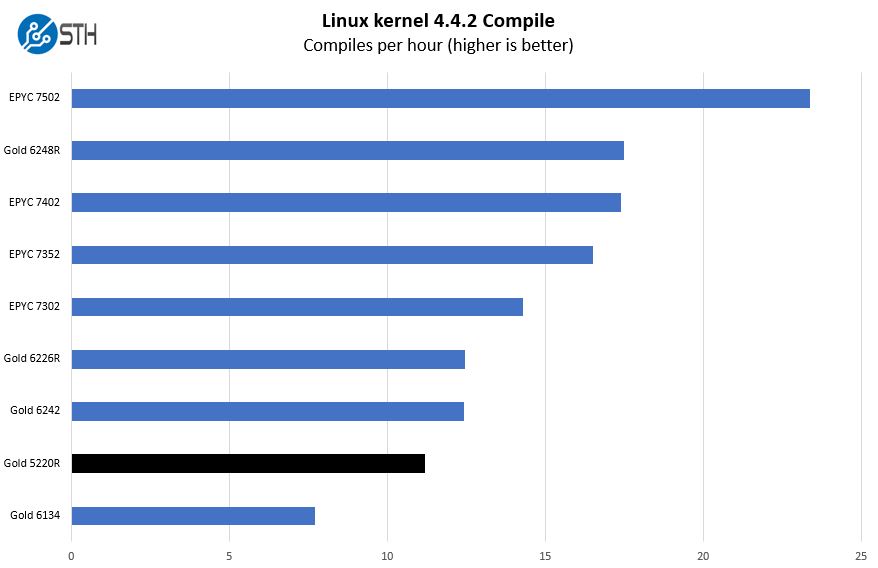
In this example we see the 16-core and slightly less expensive Intel Xeon Gold 6226R actually out-perform a 24-core Xeon Gold 5220R. This is largely because of clock speed differences. As you will see in other parts of this review, that is not always the case. Still, one should remember that the Xeon Gold 5120 was a low-frequency part and that is still permeating the line despite the maximum turbo frequency boost.
c-ray 1.1 Performance
We have been using c-ray for our performance testing for years now. It is a ray tracing benchmark that is extremely popular to show differences in processors under multi-threaded workloads. We are going to use our 8K results which work well at this end of the performance spectrum.
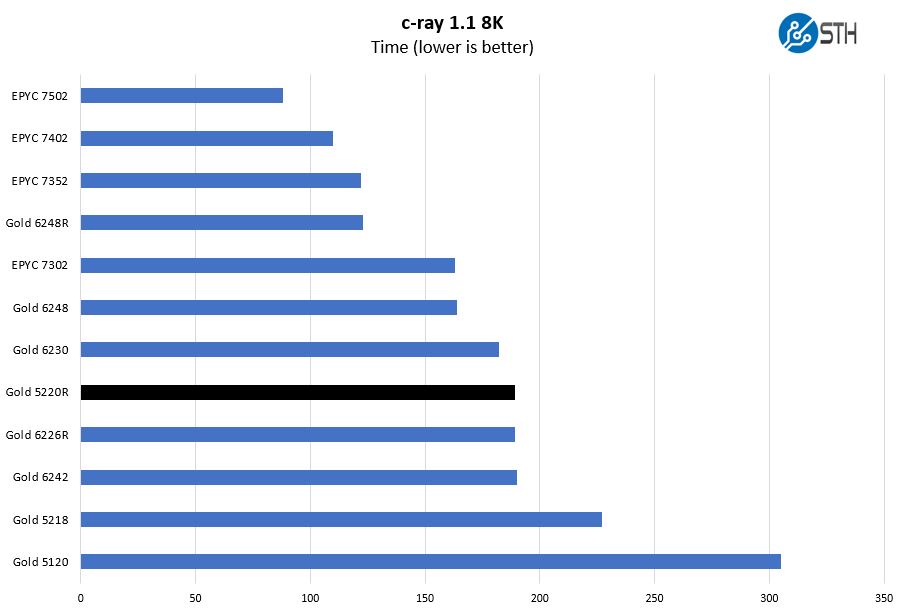
This test tends to highly favor the AMD core and cache hierarchy. That is one reason, for example, that AMD tends to use benchmarks such as Cinebench on the workstation marketing side. Here we see the tables turn and the Gold 5220R performs better than the Xeon Gold 6226R. The fact that there are so many benchmarks that are so close should give you some sense of the clock speed differences.
7-zip Compression Performance
7-zip is a widely used compression/ decompression program that works cross-platform. We started using the program during our early days with Windows testing. It is now part of Linux-Bench.
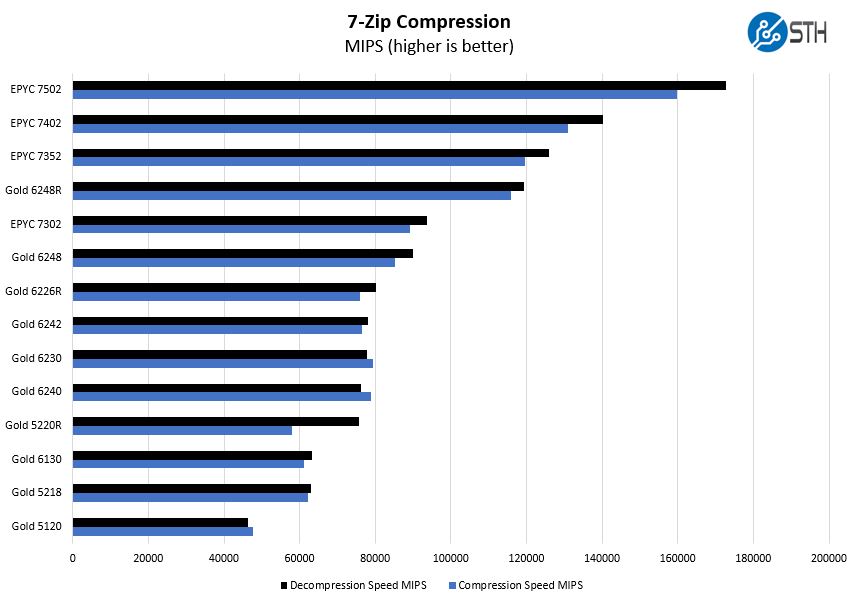
Here we can simply point to the fact that the Gold 5220R is now performing in the range of the pre-refresh Gold 6200 line. That shows just how much movement there has been in the segment.
NAMD Performance
NAMD is a molecular modeling benchmark developed by the Theoretical and Computational Biophysics Group in the Beckman Institute for Advanced Science and Technology at the University of Illinois at Urbana-Champaign. More information on the benchmark can be found here. With GROMACS we have been working hard to support AVX-512 and AVX2 architectures. Here are the comparison results for the legacy data set:
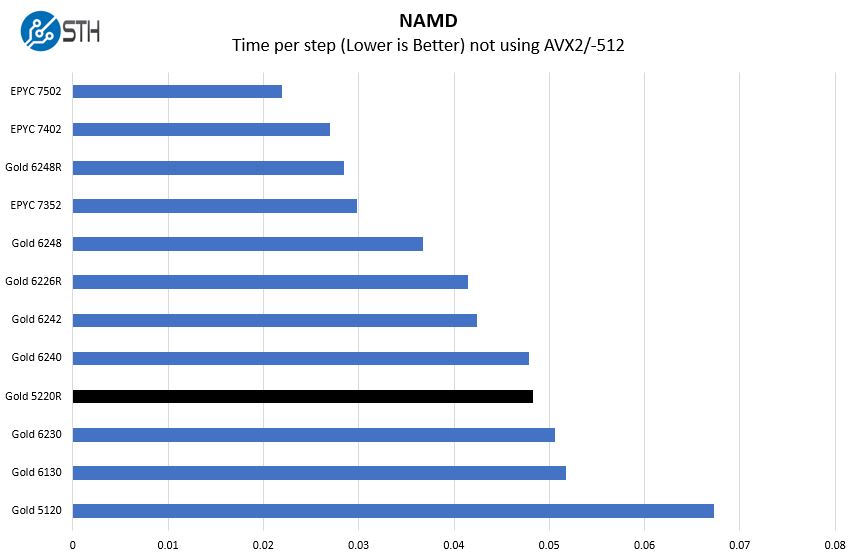
The Intel Xeon Gold 6230 was one of our top picks for the pre-refresh generation. Now the Xeon Gold 5220R can out-perform that part making it clear which chip is the better option.
OpenSSL Performance
OpenSSL is widely used to secure communications between servers. This is an important protocol in many server stacks. We first look at our sign tests:
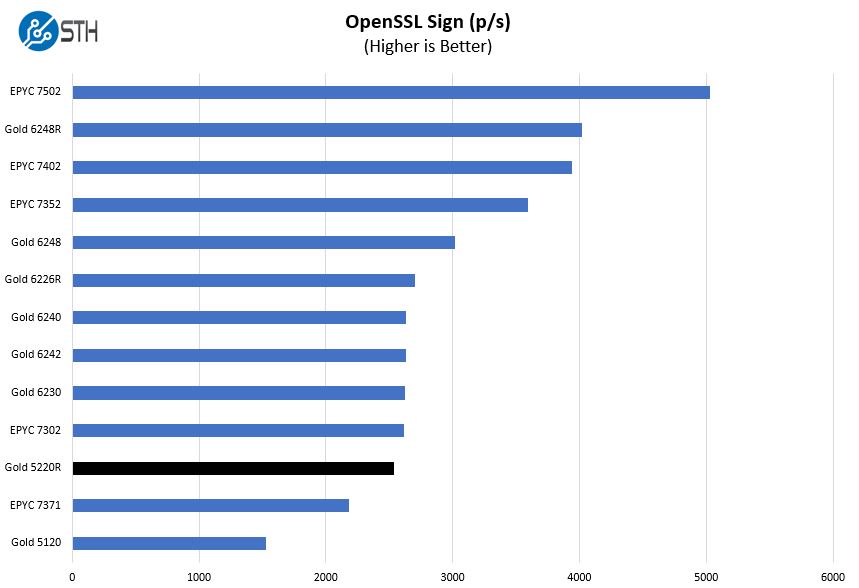
Here are the verify results:
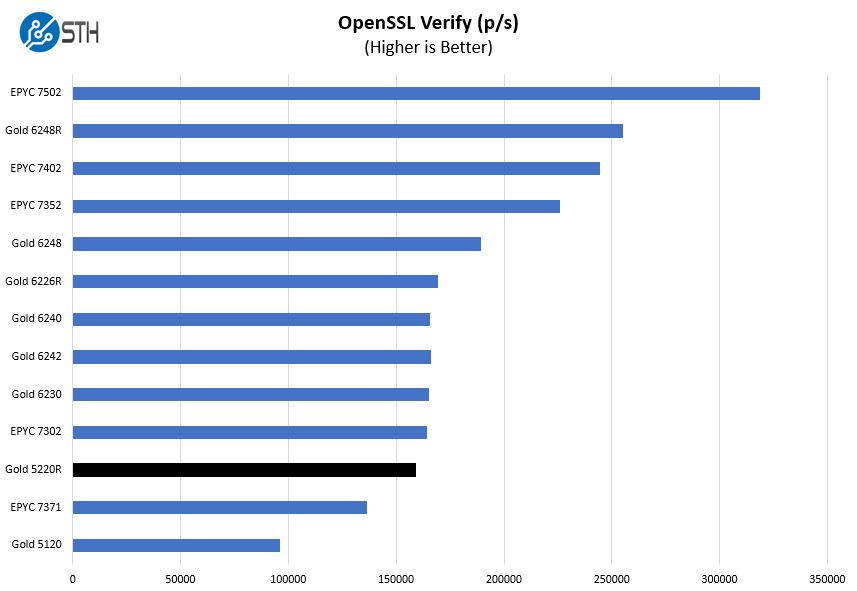
With OpenSSL, we see a huge delta between this chip and the Intel Xeon Gold 5120 launched only about two and a half years earlier. The Xeon Gold 5120 was a popular part and this shows just how much consolidation one can do upgrading to the new refresh SKUs.
UnixBench Dhrystone 2 and Whetstone Benchmarks
Some of the longest-running tests at STH are the venerable UnixBench 5.1.3 Dhrystone 2 and Whetstone results. They are certainly aging, however, we constantly get requests for them, and many angry notes when we leave them out. UnixBench is widely used so we are including it in this data set. Here are the Dhrystone 2 results:
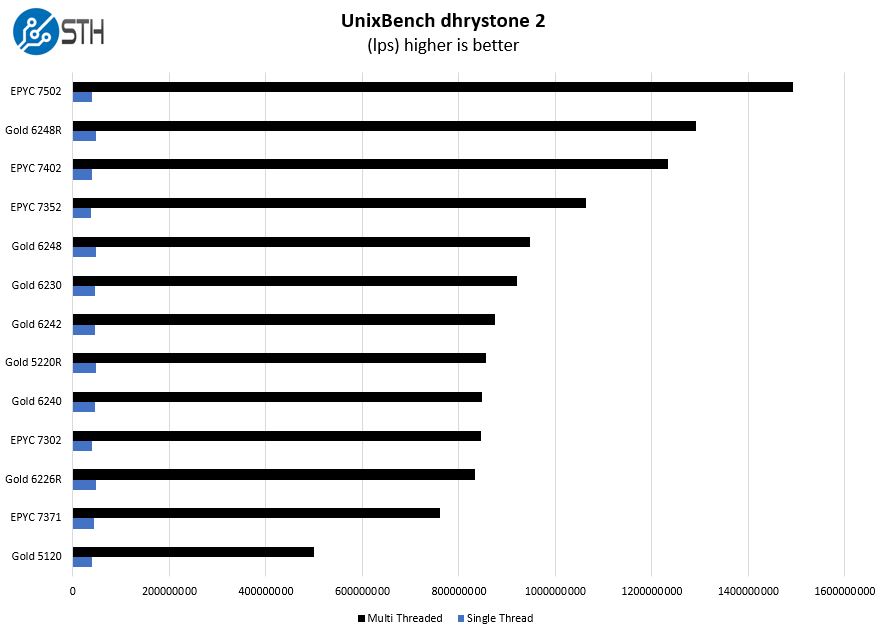
Here are the whetstone results:
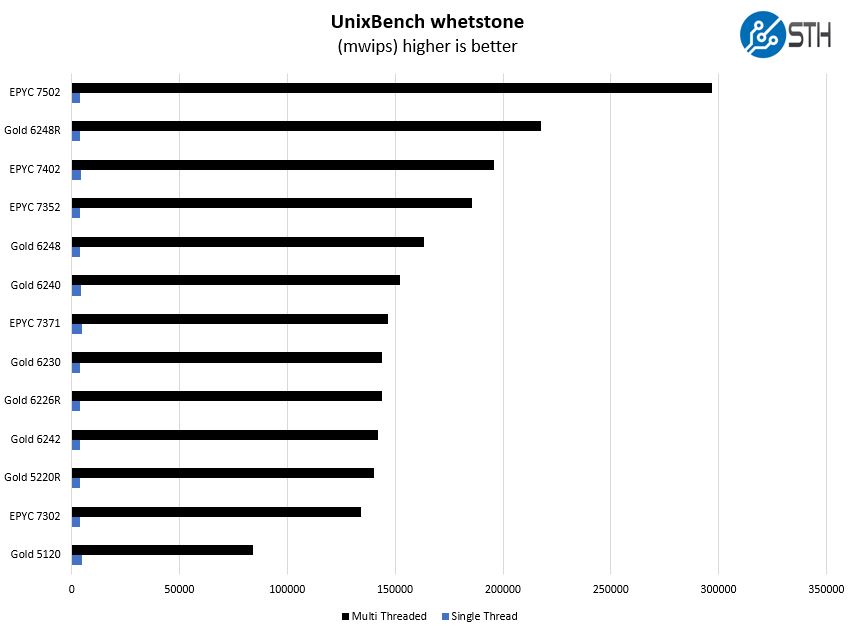
Here we see the Xeon Gold 5220R perform in the range of the AMD EPYC 7302 and AMD EPYC 7352 16-core parts. The Xeon Gold is still the more expensive part, but it shows just how far Intel has come in terms of competitiveness if one looks back to the Xoen Gold 5120 as another data point.
GROMACS STH Medium AVX2/ AVX-512 Enabled
We have a small GROMACS molecule simulation we previewed in the first AMD EPYC 7601 Linux benchmarks piece. In Linux-Bench2 we are using our “small” case which is appropriate for single-socket servers. Our GROMACS test will use the AVX-512 and AVX2 extensions if available.
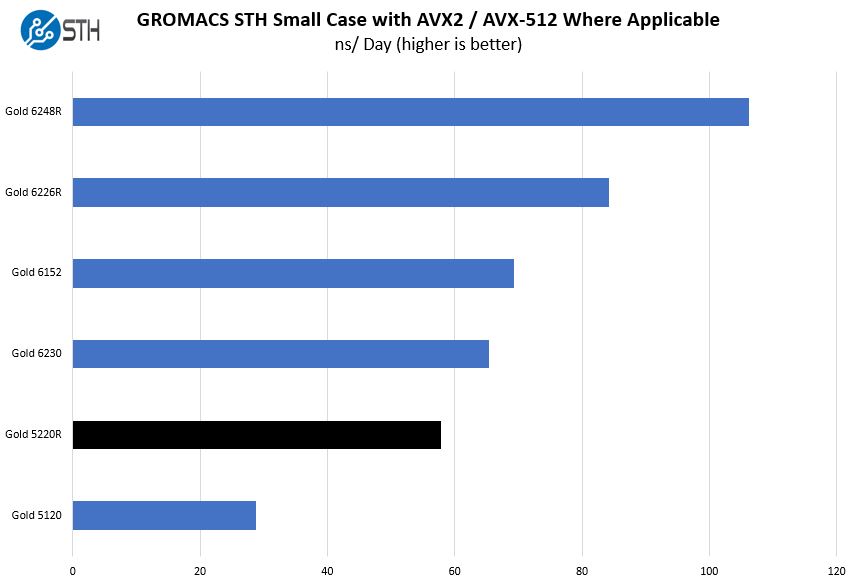
We wanted to show here that the Xeon Gold 5220R simply is much faster than the older generation Xeon Gold 5120 part with almost a 2x speedup here. One can also see the impacts of a lower TDP on a very power-hungry application that is utilizing AVX-512.
Chess Benchmarking
Chess is an interesting use case since it has almost unlimited complexity. Over the years, we have received a number of requests to bring back chess benchmarking. We have been profiling systems and now use the results in our mainstream reviews:
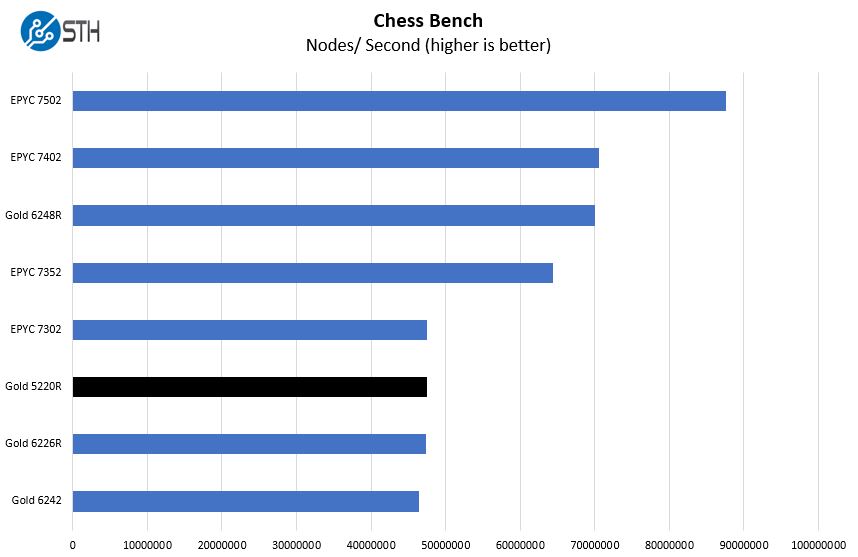
On the chess benchmark, we see a virtual dead heat between the lower-clocked but higher core count Xeon Gold 5220R and the Xeon Gold 6226R. For those who are running per-core licensed software, the Xeon Gold 6226R is likely the wiser choice.
STH STFB KVM Virtualization Testing
One of the other workloads we wanted to share is from one of our DemoEval customers. We have permission to publish the results, but the application itself being tested is closed source. This is a KVM virtualization-based workload where our client is testing how many VMs it can have online at a given time while completing work under the target SLA. Each VM is a self-contained worker.
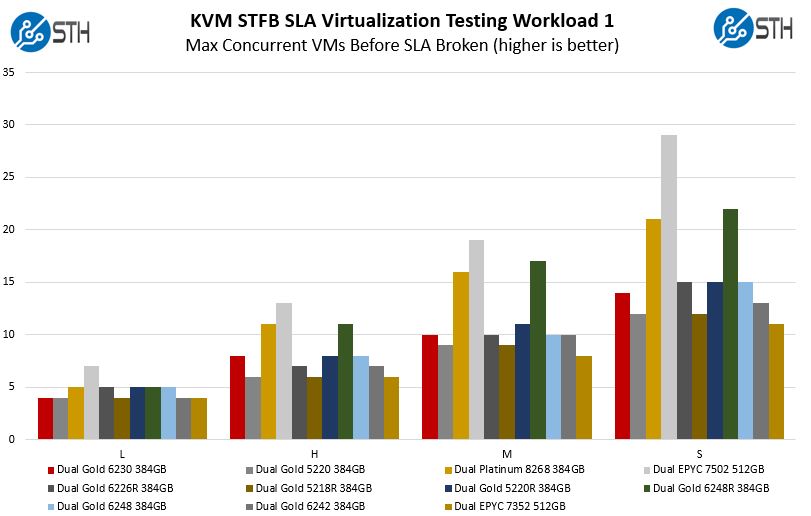
Here we tried giving some sense of what we are getting in terms of virtualization performance. We again see the Xeon Gold 5220R perform about in the middle of the pack for the configurations we tested.
Next, we are going to discuss market positioning and impact before getting to our final words.



